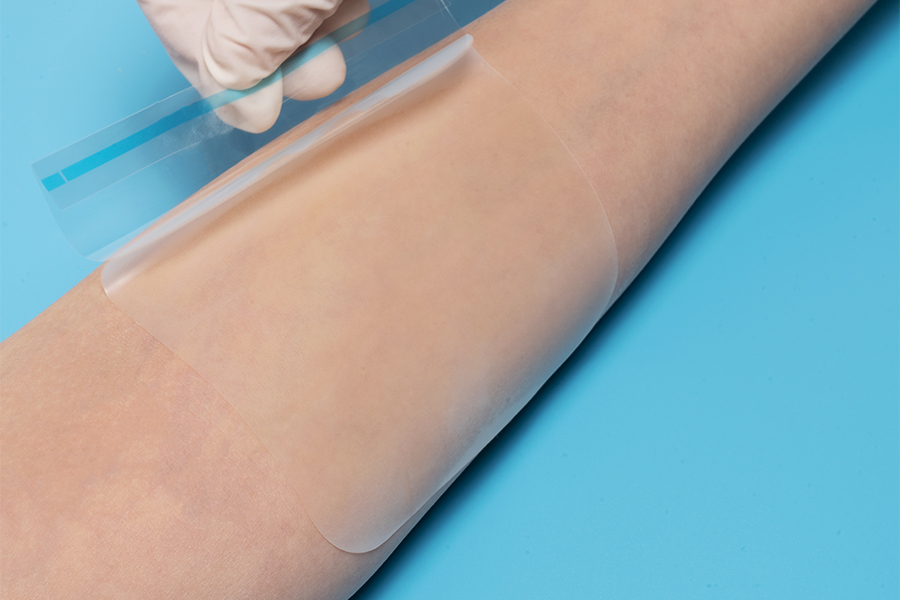Hydrocolloid wound dressings effectively manage exudate levels through their unique composition and design features, which set them apart from other types of dressings:
Absorption Capacity: Hydrocolloid dressings are composed of a gel-forming matrix containing colloidal particles such as gelatin, sodium carboxymethylcellulose (CMC), and pectin. These particles absorb wound exudate through a process of gel formation, which helps to maintain a moist environment conducive to healing while minimizing the risk of maceration (over-hydration) of the wound edges.
Exudate Handling: The gel formation within hydrocolloid dressings not only absorbs exudate but also retains it within the dressing structure. This feature reduces the frequency of dressing changes compared to traditional dressings like gauze, thereby minimizing disruption to the wound bed and reducing patient discomfort.
Moisture Balance: Hydrocolloid dressings create a moist healing environment that supports wound healing processes such as angiogenesis (formation of new blood vessels) and granulation tissue formation. This environment is known to accelerate healing rates compared to dry or excessively moist wound conditions.

Conformability and Adherence: These dressings adhere well to intact skin surrounding the wound, forming a secure seal that prevents leakage and reduces the risk of contamination. This adherence also helps in maintaining a consistent contact between the dressing and the wound bed, optimizing the absorption of exudate.
Ease of Application: Hydrocolloid dressings are user-friendly and can be easily applied and removed without causing trauma to the wound or surrounding skin. This minimizes pain and discomfort for the patient during dressing changes.
The ability of hydrocolloid wound dressings to effectively manage exudate levels stems from their absorbent gel-forming properties, ability to maintain a moist healing environment, conformability, and ease of use. These features make them a preferred choice for managing moderately exuding wounds across various clinical settings.

 English
English 中文简体
中文简体








